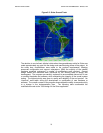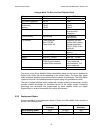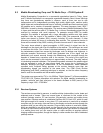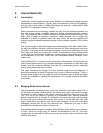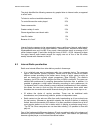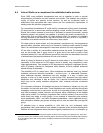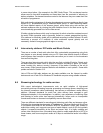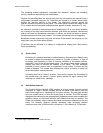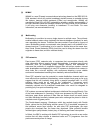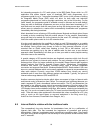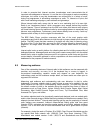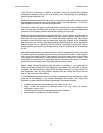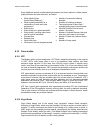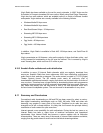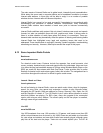DIGITAL RADIO GUIDE INTERNET RADIO
81
(3) WiMAX
WiMAX is a new IP-based communications technology based on the IEEE 802.16-
2004 standard, which will provide broadband wireless access to portable devices
like laptops, personal digital assistants (PDAs) and smartphones. WiMAX will
complement fixed DSL and WiFi networks by providing mobility and portability. It
will offer seamless hand-over between WiMAX, WiFi and mobile 2G/3G networks.
It will bring new dimension (mobility) to broadband TV and Radio. For more
information, see www.wimaxforum.org.
(4) Multicasting
Multicasting is a solution to serve a single stream to multiple users. The multicast-
enabled network routers clone (replicate) the Internet datagrams (packets) for each
user requesting the stream. Therefore the same content is conveyed to a group of
users. Multicasting cannot use automatic rate changing and is not suitable for on-
demand services. If multicasting is to be used for several sites at the same time,
then Virtual Private Networks (VPN) should be used to bring the stream from the
originator to these sites, and then multicast locally.
(5) P2P networks
Peer-to-peer (P2P) networks refer to computers that communicate directly with
other computers without passing through intermediaries. It enables users to pool
resources, such as processing power, storage capacity and bandwidth to
overcome the problems of congested Internet links and server crashes. Internet
radio broadcasters are beginning to use P2P systems to distribute their content in
what looks like a win-win situation, with consumers obtaining a more reliable
service and broadcasters benefiting from drastically reduced bandwidth fees.
Since P2P networks have the potential to create distribution channels which are
more efficient than traditional broadcasting, some analysts have gone as far as to
suggest that this will inevitably bring about a massive paradigm shift. In a P2P
scenario, there would be no need for the "middleman" - consumers would
download content directly from programme producers. This would lead to a
massively reduced role for traditional broadcasters who would be relegated to
providing only live sport and breaking news.
P2P systems use several distinct techniques to distribute files more efficiently. One
of the most widespread is "swarming," which was pioneered by BitTorrent. In this
technique, peers share portions of data: files are broken down into small pieces
and then distributed randomly between peers who exchange the pieces in order to
complete a sort of jigsaw puzzle.
The Danish-based company, Octoshape, which has worked closely with Danish
Radio, claims that its GridCasting solution saves 97% of bandwidth compared to
the traditional server farm solution. As with other P2P technologies, the more
people who download files, the faster they download. Other potential benefits
include higher quality bitrates, instant play, no buffering and fewer interruptions.
In Britain, the BBC is working with Kontiki P2P technology to provide a new online
service that will allow viewers to download radio and TV programme from the
previous seven days free of charge.



